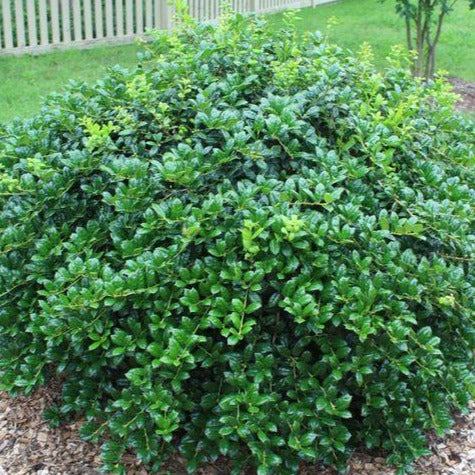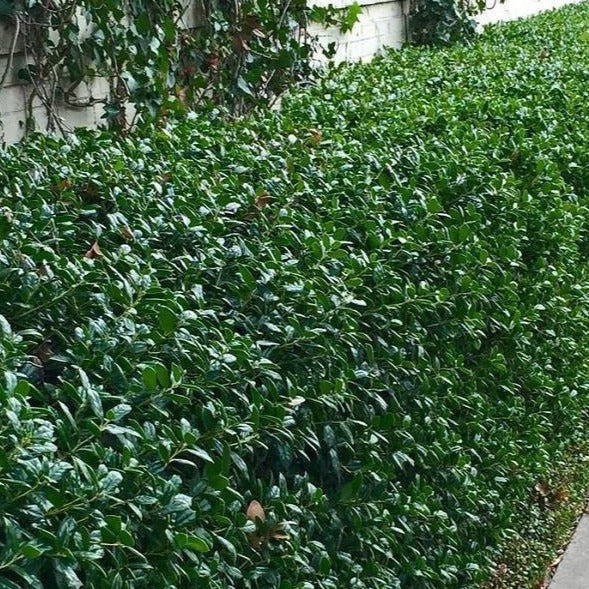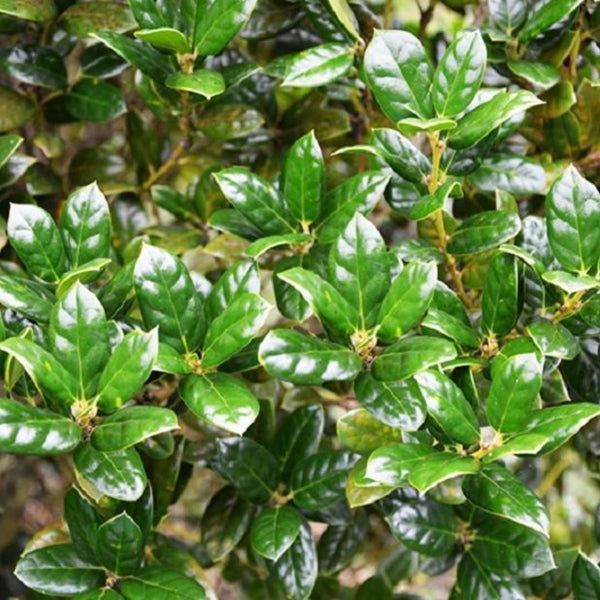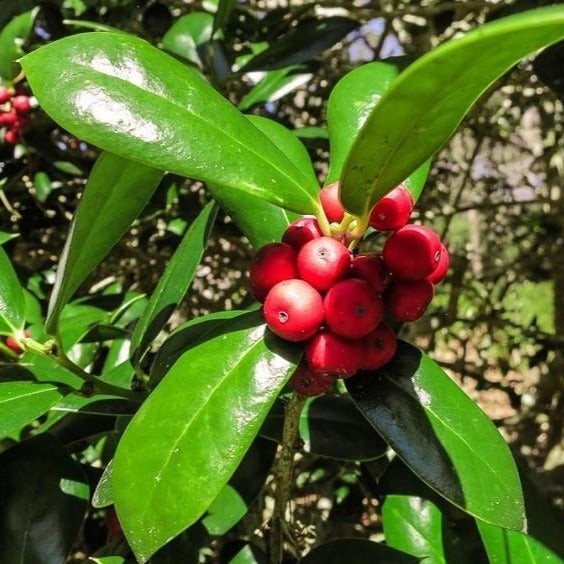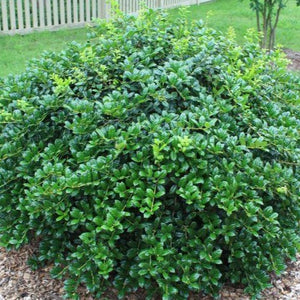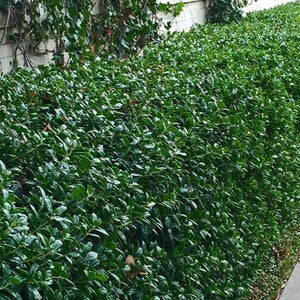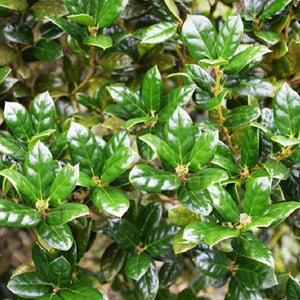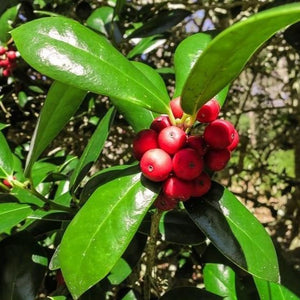Dwarf Burford Holly
Product Details
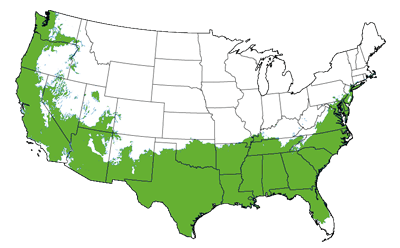 Growing Zones 7-9
Growing Zones 7-9
| Soil Type | Acidic, Adaptable, Well Drained |
| Sunlight | Full, Partial |
| Drought Tolerance | Good |
| Mature Height | 6-8 Feet |
| Mature Width | 8-10 Feet |
| Growth Rate | fast |
| Fall Color | Green |
| Bloom Color | White |
| Shipping Restriction | AZ, OR |
If you are looking for an attractive, but tough evergreen that is compact and requires virtually no maintenance, try the Dwarf Burford Holly hedge! This variety of Holly is the easiest to maintain. It has high deer, rabbit, insect, and disease resistance. It is even salt and pollution tolerant. So, it is perfect for urban and coastal areas.
Add shiny, medium green color to your landscape with the evergreen leaves of the Dwarf Burford Holly. In fall and winter bright red berries adorn this compact shrub enticing birds and wildlife to your yard. You don't have to worry about male and female plants with this holly. It is self-pollinating and the Dwarf Burford holly can produce berries.
This holly thrives in full to part sun and prefers a slightly acidic soil. Although it does tend to adapt just about any well-draining soil. This holly does not require pruning, but they tolerate it well if you prefer to keep them a certain size or shape. Plant your Dwarf Burford Holly hedge anytime of the year.
Plant some Dwarf Burford Holly hedges and increase the value of your home instantly!
When To Prune
Doesnt require pruning but dead leaves and branches can removed throughout the year for upkeep and a cleaner look on your shrubs.
Is This Shrub Evergreen?
Yes, you can enjoy these shrubs year round.
Where To Plant
As borders or in mulch beds that have well drained, acidic soil with full sun to part shade conditions.
Be sure to choose the appropriate location for your Dwarf Buford Holly. As long as you avoid extreme temperatures and the ground isn't frozen you can plant your Holly almost any time of the year.
This holly thrives in full to part sun and prefers a slightly acidic soil. Although it does tend to adapt just about any well-draining soil. After planting, adding a layer of 2 to 3 inches of mulch will help keep the soil moist. Mulching is highly recommended in cooler zones to protect the plant's roots in winter as well. Do not allow the mulch to touch the trunk as this increases the chances of pests and disease. Water your Holly deeply a couple times a week for the first few months. After Hollies are established, they only need watered during hot, dry spells. Fertilize in spring with a slow release fertilizer for broad leaf evergreens. This holly does not require pruning, but they tolerate it well if you prefer to keep them a certain size or shape.
The best way to prevent disease and pests is by keeping you Holly healthy. Proper location choice, watering, and fertilization are the keys to your success. Hollies rarely have issues with pests or disease, but here are a few issues that occasionally affect Hollies. Mites and scale can be treated with horticultural oil. For severe infections the pesticide Bonide is recommended. Avoid saturated soils to prevent fungal issues in Hollies.


